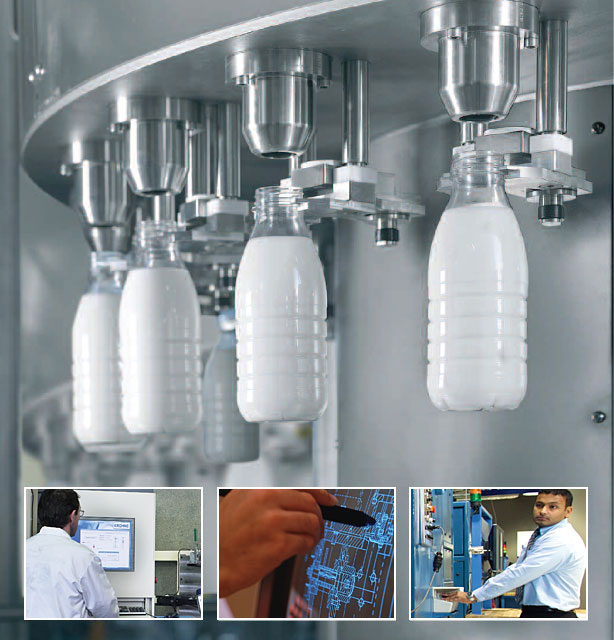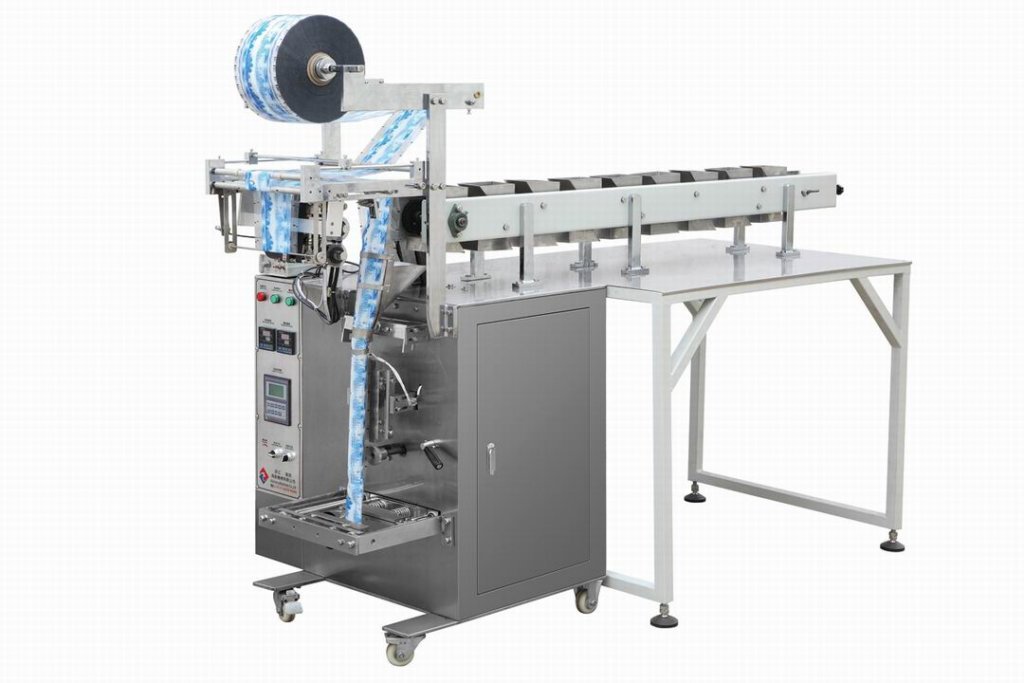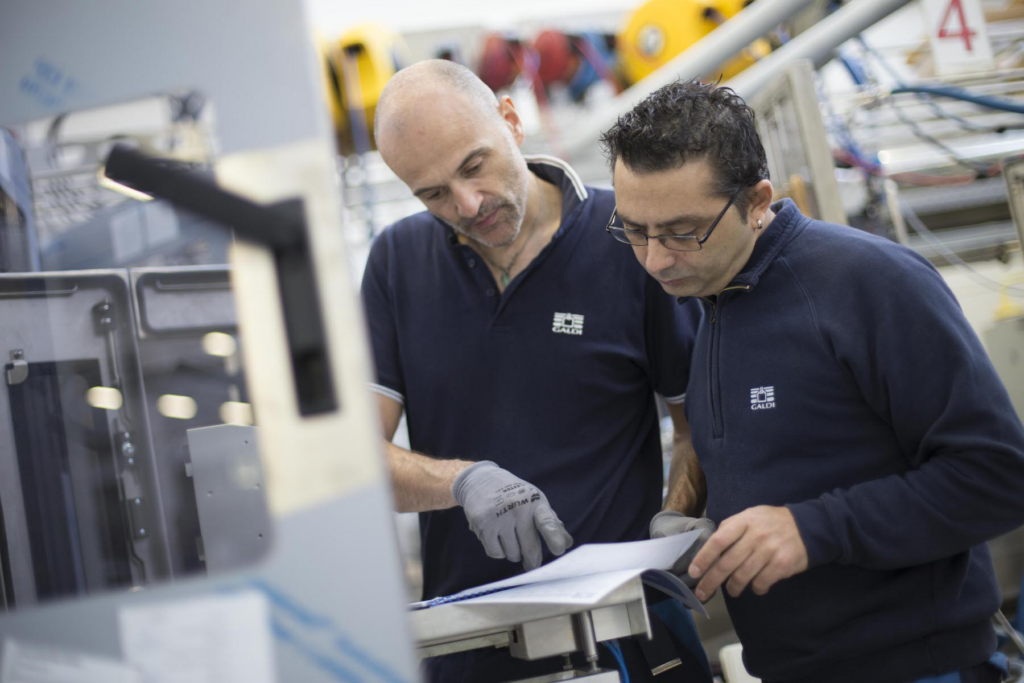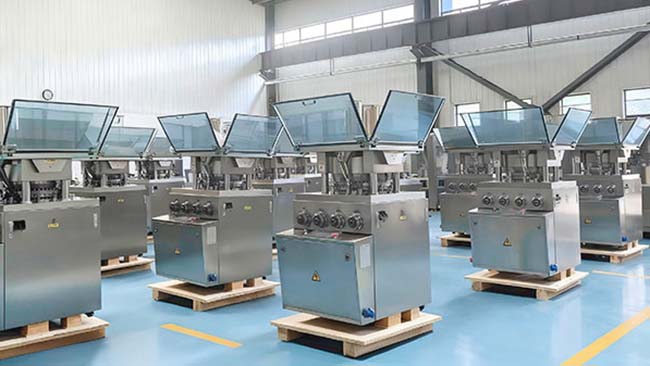医療用包装機械は、自動車と同様に、最適な生産と設備全体の効率を確保するために、定期的なメンテナンスが必要です。包装機器の適切なメンテナンスは、 ダウンタイムを最小限に抑え、コストを低く抑える.
この記事では、 薬のパッケージnグラム 機械適切なメンテナンス戦略により、 定期的な検査とテストとトレーニング 専門家チームによるメンテナンスにより、予期せぬダウンタイムを大幅に削減し、コストを削減し、機械の寿命を延ばし、利益を最大化することができます。これらのソリューションを実践すれば、メンテナンススタッフを最小限に抑えた企業でも、これらのメリットを享受し、包装ラインの運用を最適化することができます。以下では、包装機械のメンテナンス方法について、その概要をご紹介します。 カプセル充填機.
予防保守

出典: INSCMagazine
予防保守(PM)とは、訓練を受けた技術者がお客様の機器に対して定期的に行う保守です。事後対応型ではなく、予防的なアプローチであるため、深刻な問題や高額な修理が発生する前に、必要な修理を行うことができます。
通常、小さな問題が大きな問題を引き起こします。摩耗した部品、例えば ギア、ベルト、チェーン 機械の研削が停止することがあります。機械の振動によって緩むことが知られているボルトは、ラインに損傷を与える可能性があります。これらはすべて予防保守中に発見できます。包装機械の予防保守は、部品の故障を回避し、ダウンタイムを削減し、機器の寿命を延ばし、部品の過度の摩耗を防ぎ、安全な操作を確保し、運用コストを削減し、機器の信頼性を向上させるのに役立ちます。
予防保守作業の例としては、機械の検査、摩耗部品の定期的な監視と交換、摩耗しやすい部品の適切な在庫、 打錠機 故障が発生した場合、これらの予防保守作業は通常、高度な技術訓練と専門知識を必要とします。そのため、高度な資格と訓練を受けた担当者、または包装機械メーカーの認定サービス技術者のみが実施する必要があります。サービス監査や予防保守プログラムを提供しているサプライヤーもいくつかありますので、必要に応じて関連会社に問い合わせてみてください。
校正とテスト

出典:プロスター
最良の保守戦略は、(前述の)予防保守プログラムと自律保守を組み合わせたものです。自律保守タスクは、以下の点に重点を置いています。 校正およびテスト手順 機械オペレーターによって実行されます。
このような環境では、オペレーターは 機構 稼働中の機械のメンテナンスに必要な基本的な校正や試験を実施できます。これにより、特に保守チームをはじめとする企業のパフォーマンス問題の診断を支援します。オペレーターは常に機械を操作しているため、何か変化があれば、定期保守訪問よりもずっと前に問題を特定できます。
オペレーターは担当するタスクのリストを持っています。通常、これらのタスクは毎週、毎月、または毎年実行する必要があります。オペレーターは、簡単な視覚的な指示に従って、様々な校正および試験タスクを実行できるよう訓練されています。これらの校正および試験タスクは通常単純ですが、大規模で時間のかかるメンテナンスの必要性を回避できます。さらに、オペレーターは問題が手に負えなくなる前に問題を特定できる場合が多くあります。これらの努力により、校正および試験から得られるメリットには以下が含まれます。 削減 時間、関与の減少、メンテナンスや修理コストの削減.
緊急メンテナンスと修理

出典:中国製
包装機械の稼働中および稼働後には定期的なメンテナンスが必要となるが、オペレーターは常に様々な緊急事態に対処できる態勢を整えておく必要がある。機械の故障確率は 偶然の そして時には 予測不可能な 自然の中で、 緊急事態への対応 メンテナンス作業の重要な部分でもあります。
定期メンテナンス 日常的に行われ、潤滑、締め付け、関連部品の点検、清掃に重点が置かれる傾向があります。しかし、 緊急事態 故障発生後に処理され、エンジン、クラッチ、トランスミッション、ギアボックス部品、ステアリング、ブレーキ部品のチェックを中心に、トラブルシューティングと部品の交換に重点が置かれる傾向があります。
緊急メンテナンスと修理の焦点は 障害検出、調整、隠れた問題の排除、部品の摩耗と損傷のバランス調整機器の性能に影響を与える部品や故障の兆候がある部品については、診断テストと状態確認を実施する必要があります。その後、必要なトラブルシューティングや部品交換などの作業を完了する必要があります。
スタッフの研修と教育

出典: Galdit.T
機械は生産工程において不可欠な要素ですが、従業員もまた不可欠な存在です。前述のメンテナンス対策を見れば、あらゆる作業において、 従業員の参加これを念頭に置いて、 専門家チームの訓練 企業の問題解決と業務効率の向上に効果的に役立ちます。従業員の専門知識が不足していると、機械の故障に気付いたり、調整したりすることができません。
プロフェッショナルなチームを育成するには、 社内研修. 例えば企業は、スタッフに自社の設備の独自の特徴を教え、関連する故障点を詳しく説明することができます。 さらに重要なのは解決策は研修で伝える必要があります。社内の従業員数が多く、研修が難しい場合は、専門の機器ベンダーと提携して指導を行うのも良いでしょう。このような研修は、従業員が機械の性能をより深く理解するのに役立ちます。
オペレーターは 最初の行 機械の警告サインを報告する能力。彼らは毎日機械を操作しており、特定の機械に問題が発生しているかどうかを常に把握しています。先見性のある機械オペレーターは、ベアリングが摩耗し始めたり、ローラーが円から外れ始めたりといった、機械の出力に悪影響を与え始める兆候を察知できる必要があります。オペレーターに機械に関する詳細なトレーニングを実施することで、これらの非常に重要な詳細情報をサービス技術者に提供できるようになり、修理やメンテナンスの簡素化につながります。十分にトレーニングを受けたスタッフは、より安全なオペレーターでもあります。
文書化と記録の保管

出典: TNLT
メンテナンスと修理をすべて記録することで、薬剤包装機が専門家の推奨に従って修理されたことを証明できます。機械の完全な履歴があれば、何がいつ完了したかを把握するのにも役立ちます。機器のサービス、履歴、稼働時間に関する情報を記録しておくと、適切なメンテナンスを行う際に役立ちます。 効果的な設備管理を実現します。
毎日のログと履歴には以下が含まれます チェックリストとメンテナンスログ すべての点検と修理を記録し、調整前後のパフォーマンスデータと、メンテナンス作業の実施の有無を追跡します。これらをすべて実施することで、推測ではなく実際の測定値に基づいて、より情報に基づいた運用上の意思決定を行うことができます。
結論
オペレーターやその他のレベルで事前に計画された予防保守と自律保守戦略を活用することで、生産ラインとパッケージング ラインを最先端の機器パフォーマンスに維持できます。
さらに、一部の医薬品では、 医薬品の二次包装医薬品二次包装機の修理も複雑になる可能性があります。そのような場合は、 世界クラスの機器メーカー サービスとサポートの確保も、保守戦略の重要な要素です。効率的な保守戦略は、計画外の高額な修理を回避し、計画外の保守ではなく計画的な保守を増やし、設備の可用性を最大限に高め、生産能力と保守予算を正確に予測する能力を向上させるのに役立ちます。
さらに、自律保守と予防保守戦略を組み合わせることで、生産能力と保守予算をより正確に予測できるようになります。


